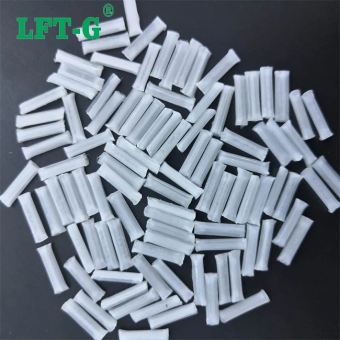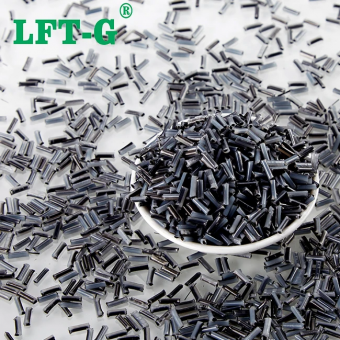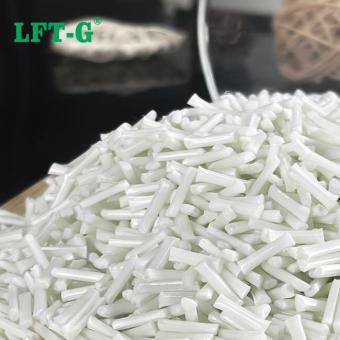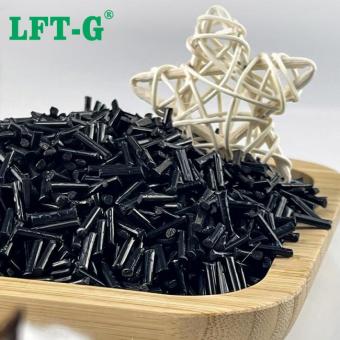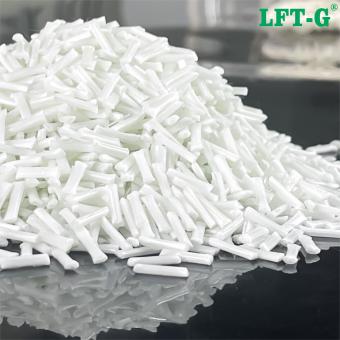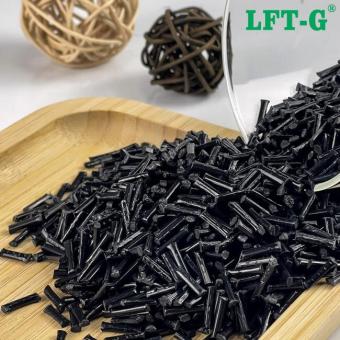-
Xiamen LFT PPA Polyphthalamide filled Long Glass Fiber reinforced plastic resinPPA (Polyphthalamide) is polyphthalamide.PPA is a kind of thermoplastic functional nylon with both semi-crystalline structure and non-crystalline structure. It is prepared by polycondensation of phthalic acid and phthalenediamine. It has excellent thermal, electrical, physical and chemical resistance and other comprehensive properties.
- PPA long fiber compounds manufacturer
- ppa granules natural polymer producer
- PPA producer LGF glass fiber
- China wholesale PPA resin pellet filler
- Thermoplastic materials PPA maker
- Injection molding PPA GF
Tags :
-
PPS Polyphenylene Sulfide Long Glass Fiber Reinforced CompoundsPPS is a high-performance, tough engineering plastic with great dimensional and thermal stability, as well as a wide operating temperature range of up to 260 °C and good chemical resistance. Moreover, PPS, like most other thermoplastics, is an electrical insulator. Its ability to be used at high temperatures coupled with its thermal stability makes PPS great for applications such as semiconductor components in machinery, bearings, and valve seats.
- PPS for Lightweight Automotive Parts
- Industrial PPS Composite Materials
- PPS for Injection Molding
- High-Performance PPS Composites
- Long Fiber Reinforced PPS
- china manufacturer PPS good price warehouse
Tags :
-
ABS Acrylonitrile Butadiene Styrene Long Glass Fiber Reinforced CompoundsABS is another preferred type of engineering plastic that is valued for its chemical and thermal stability, strength, toughness, and glossy finish. Its host of desirable properties make it a versatile material. It is used in everything from consumer products like toys and bicycle helmets to automotive applications such as interior trim pieces, housings for electronics, and more.
- ABS for Lightweight Automotive Parts
- Industrial ABS Composite Materials
- ABS for Injection Molding
- High-Performance ABS Composites
- Long Fiber Reinforced ABS
- china manufacturer ABS good price warehouse
Tags :
-
TPU Thermoplastic Urethane Long Glass Fiber Reinforced CompoundsETPU is a tough, highly abrasion-resistant resin that bridges the gap between rubbers and plastics. TPUs can be formulated to be rigid or elastomeric. TPU exhibits a high flex before break and is ideal for wheels and door panels.
- TPU for Lightweight Automotive Parts
- Industrial TPU Composite Materials
- TPU for Injection Molding
- High-Performance TPU Composites
- Long Fiber Reinforced TPU
- china manufacturer TPU good price warehouse
Tags :
-
LFT Nylon Polyamide 12 Long Carbon Fiber Reinforced CompoundsPA12 long carbon fiber reinforced material combines the excellent properties of polyamide 12 with the strength and stiffness of long carbon fibers. This high-performance composite offers superior mechanical strength, impact resistance, and dimensional stability, making it ideal for demanding applications in automotive, aerospace, and industrial sectors.
- PA12 long carbon fiber supplier
- PA12 composite 3D printing automotive
- Thermoplastic resin made in China
- pA66 filament polymer resin pellets
- EDM wholesale on stock PA 12 materials
- Best price PA12 high strength
Tags :
-
LFT Nylon Polyamide 12 Long Glass Fiber Reinforced CompoundsPA 12 (also known as Nylon 12) is a good general-use plastic with broad additive applications and is known for its toughness, tensile strength, impact strength and ability to flex without fracture. PA 12 has long been used by injection molders due to these mechanical properties. If you’re considering converting metal parts to plastic, PA12 will be a good choice.
- PA12 1,2 PA filler GFRP 40 30 20
- pa12-gf30 polymaker application
- Nylon filament polymer resin pellets
- EDM wholesale on stock PA12 materials
- Best price PA12 for engineering
Tags :
-
LFT Nylon Polyamide 66 Long Carbon Fiber Reinforced CompoundsPA66-CF40 is a 40% long carbon fiber-reinforced PA 66, offering exceptional strength, creep resistance, rigidity, and dimensional stability. After modification, PA66-CF40 exhibits outstanding mechanical properties, making it highly resilient and ideal for high-load applications in extreme temperature environments. This material is particularly suitable for components that require high strength and durability over extended periods, such as covers and structural parts in machines and vehicles.
- PA66 PA filler CFRP 40 30 20
- pa66-cf30 polymaker application
- EDM wholesale on stock PA 66 materials
- Best price PA66 high strength
Tags :
-
Nylon Polyamide 66 Long Glass Fiber Reinforced CompoundsThe mechanical properties of long glass fiber reinforced nylon 66 (LGFR-PA66) are obviously better than those of short glass fiber reinforced nylon 66 (SGFR-PA66), and the molding processing performance is also better. It can be molded by various molding methods such as injection molding and compression molding, and complex components can also be formed.
- PA66 PA filler GFRP 40 30
- pa66-gf30 polymaker application
- pA66 fiberglass filament
- EDM wholesell on stock PA 66 materials
Tags :
-
Nylon Polyamide 6 Filling Long Carbon Fiber Reinforced CompoundsPA6 long carbon fiber composites offer exceptional strength, stiffness, and low weight, making them ideal for high-performance applications in industries like automotive, aerospace, and electronics. These materials provide superior mechanical properties, including high tensile strength and excellent fatigue resistance, while also ensuring enhanced dimensional stability under extreme conditions. PA6 long carbon fiber composites are a reliable solution for replacing metals in demanding, lightweight structural components.
- PA6 PA filler CFRP 40 30
- pa6-cf30 polymaker application
- pA6 carbon fiber filament
- EDM wholesell on stock PA6 materials
- Best price PA6 high strength
Tags :
-
Nylon Polyamide 6 With Filler Long Glass Fiber Reinforced CompoundsGlass-filled Nylon, or PA6-GF, employs PA6 (polyamide 6) as the basic compounds. Polycaprolactam (PA6) is another name for Nylon 6 or PA6. PA6-GF performs well at low temperatures and has strong toughness and impact resistance. It also has high dimensional stability and moisture absorption. Glass fiber content in PA6 GF range from 20% to 60%. Strength and rigidity increase with increasing glass fiber content, while toughness and impact resistance decrease.view more
-
Homopolymer Polypropylene filling Long Carbon Fiber Polymer for AutomotiveHomopolymer PP long carbon fiber composites offer excellent mechanical properties, including high strength, rigidity, and impact resistance. These materials are ideal for high-performance applications in automotive, aerospace, and industrial sectors, where lightweight yet durable solutions are essential. With superior dimensional stability and thermal resistance, homopolymer PP long carbon fiber composites provide a reliable alternative to metals in demanding environments.
- Carbon fiber high toughness pp
- Polypropylene resin China manufacture
- pp carbon fiber filament CF CFRP
- EDM wholesell on stock PP materials
- Best priice PP high strength
Tags :
-
Extra High Strength Copolymer Polypropylene Long Carbon Fiber FilledCopolymer long carbon fiber reinforced polypropylene (PP) combines the benefits of long carbon fibers and the flexibility of PP copolymers, offering exceptional strength, stiffness, and impact resistance. It is ideal for demanding applications in industries such as automotive, electronics, and aerospace, where high mechanical performance and low weight are essential. This material provides superior dimensional stability, heat resistance, and improved resistance to fatigue and wear.
- pp carbon fiber
- CFRP recycled Lightweight instead metal
- carbon fiber reinforced pp
- carbon fiber 3D printed parts
- Best priice PP high tensile
Tags :

 e-mail
e-mail English
English français
français Deutsch
Deutsch русский
русский italiano
italiano español
español português
português العربية
العربية 日本語
日本語 한국의
한국의 中文
中文
















